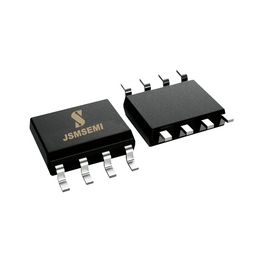Clock & Timer ICs
A clock device is an instrument designed to measure, maintain, and indicate time. It operates on various principles, such as mechanical, electronic, or atomic, to ensure accurate timekeeping.
Definition:
A clock device is a timekeeping apparatus that tracks the progression of time, allowing users to synchronize activities, schedule events, and measure intervals.
Functions:
1. Time Display: Shows the current time, which can include hours, minutes, seconds, and sometimes even the .
2. Alarm Setting: Allows users to set alarms for reminders or wake-up calls.
3. Timer: Measures elapsed time for cooking, exercise, or other activities.
4. Chronograph: In some clocks, this feature measures the time of short events.
5. World Time: For clocks with this function, users can view the time in multiple time zones.
6. Synchronization: Some clocks automatically adjust to the correct time via internet or radio signals.
Applications:
1. Home Use: Wall clocks, alarm clocks, and bedside clocks for daily timekeeping.
2. Professional Settings: Stopwatches for sports events, timers in laboratories, and digital clocks in offices.
3. Industrial Applications: Timekeeping in manufacturing processes, where precise timing is crucial.
4. Education: Classroom clocks to manage lesson times and study schedules.
5. Astronomy: Atomic clocks for precise measurements of time intervals, essential for GPS and other scientific applications.
Selection Criteria:
1. Accuracy: The device's ability to keep time without significant drift.
2. Reliability: Durability and consistency in performance over time.
3. Ease of Use: Intuitive interface and user-friendly settings.
4. Features: Depending on the user's needs, additional functions like alarms, timers, or world time may be important.
5. Design: Aesthetics and compatibility with the intended environment.
6. Power Source: Battery life, the need for a power outlet, or the option for solar power.
7. Size and Portability: Depending on whether the clock is for stationary or mobile use.
8. Price: Budget constraints and the value for money provided by the clock's features and quality.
When choosing a clock device, it's essential to consider the intended use, the environment in which it will be used, and the user's specific requirements for functionality and design.
Please refer to the product rule book for details.
Definition:
A clock device is a timekeeping apparatus that tracks the progression of time, allowing users to synchronize activities, schedule events, and measure intervals.
Functions:
1. Time Display: Shows the current time, which can include hours, minutes, seconds, and sometimes even the .
2. Alarm Setting: Allows users to set alarms for reminders or wake-up calls.
3. Timer: Measures elapsed time for cooking, exercise, or other activities.
4. Chronograph: In some clocks, this feature measures the time of short events.
5. World Time: For clocks with this function, users can view the time in multiple time zones.
6. Synchronization: Some clocks automatically adjust to the correct time via internet or radio signals.
Applications:
1. Home Use: Wall clocks, alarm clocks, and bedside clocks for daily timekeeping.
2. Professional Settings: Stopwatches for sports events, timers in laboratories, and digital clocks in offices.
3. Industrial Applications: Timekeeping in manufacturing processes, where precise timing is crucial.
4. Education: Classroom clocks to manage lesson times and study schedules.
5. Astronomy: Atomic clocks for precise measurements of time intervals, essential for GPS and other scientific applications.
Selection Criteria:
1. Accuracy: The device's ability to keep time without significant drift.
2. Reliability: Durability and consistency in performance over time.
3. Ease of Use: Intuitive interface and user-friendly settings.
4. Features: Depending on the user's needs, additional functions like alarms, timers, or world time may be important.
5. Design: Aesthetics and compatibility with the intended environment.
6. Power Source: Battery life, the need for a power outlet, or the option for solar power.
7. Size and Portability: Depending on whether the clock is for stationary or mobile use.
8. Price: Budget constraints and the value for money provided by the clock's features and quality.
When choosing a clock device, it's essential to consider the intended use, the environment in which it will be used, and the user's specific requirements for functionality and design.
Please refer to the product rule book for details.
Categories
Featured Products
Datasheets
Article

What Is a Potential Transformer (PT)?
Table of Contents + 1. Basic Definition & Background 1.1. What Is a Potential Transformer? 1.2. PT vs Ordinary Transformer vs Instrument Transformer 1.3. Applications of Potential Transformers / What Are Potential Transformers Used For?2. Operation Principle 2.1. Working Principle of a PT / VT 2.2. Voltage Ratio & Turn Ratio Relationship 2.3....
Learn More >
ICkey Named Intel IoT Solution Aggregator, Marking Strategic Milestone in Partnership
ICkey, a leading distributor of electronic components and provider of digital supply chain solutions, has entered into a strategic partnership with global semiconductor giant Intel, becoming an official Intel IoT Solution Aggregator. To commemorate this milestone, the two companies held a signing ceremony under the theme “Smart Connectivity, Powering the Future.” During the ceremony, Bi Fenglei, Senior ...
Learn More >

ICkey Successfully Lists on Shenzhen Stock Exchange ChiNext Board, Empowering Innovation in the Electronics Industry
On September 30, 2025, ICkey (Shanghai) Internet & Technology Co., Ltd. (ICkey) announced its successful listing on the ChiNext Board of the Shenzhen Stock Exchange under the stock code 301563. As a leading vertical B2B supply chain platform in the electronic components sector, ICkey supports the R&D, production, and procurement needs of the electronics manufacturing industry - specifically targeting small and medium-b...
Learn More >




_1755240762819.jpg)

_1755240751638.jpg)














